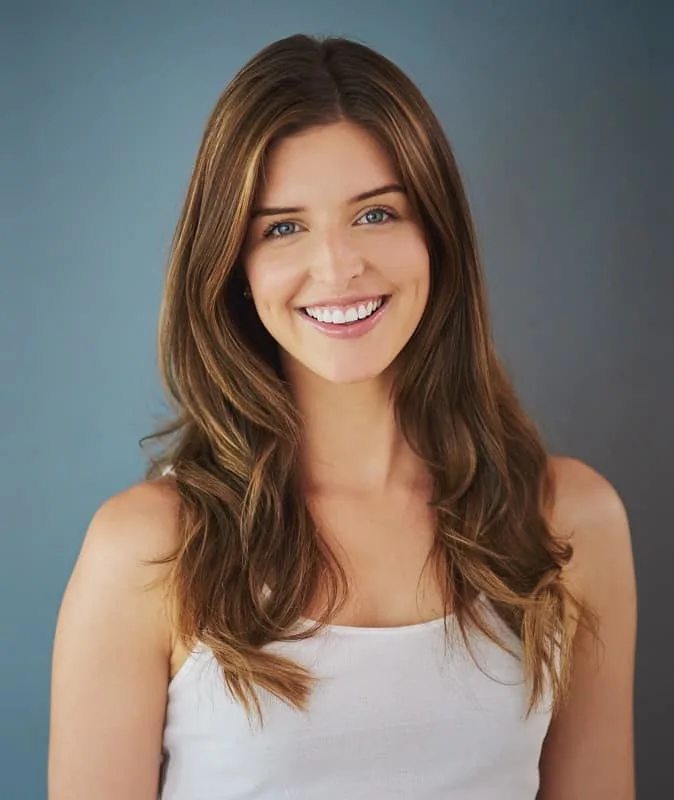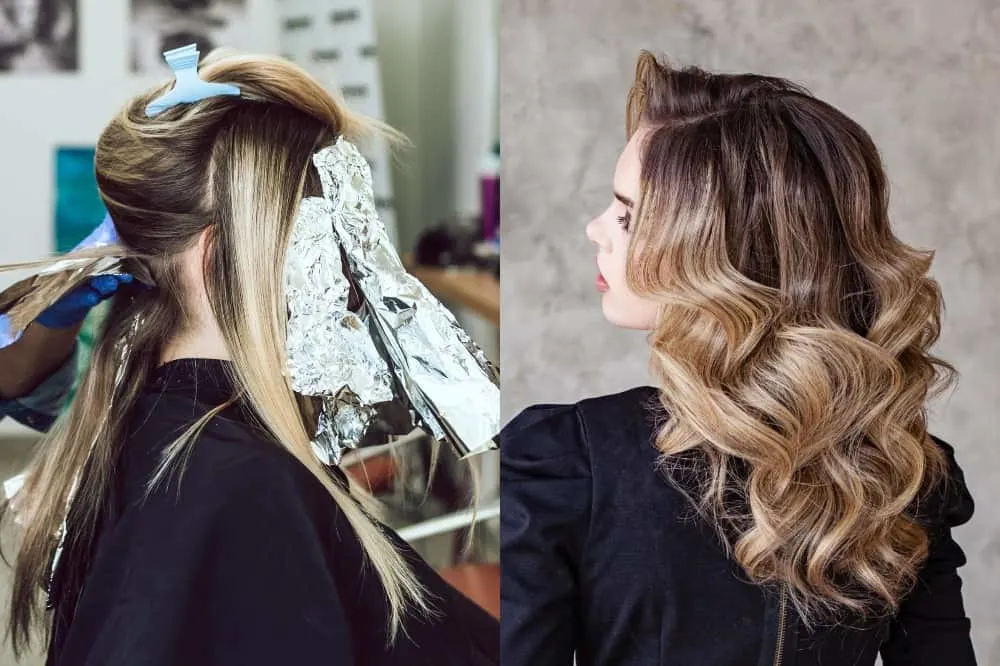There is much confusion surrounding highlights and the balayage technique. People mistake the two because they can look similar to an extent, but indeed balayage and highlights are two different hair treatments with different hair care tips and effects.
Both highlighting and balayage should get done in a salon, as they are more complicated than your typical home box dye job. Attempting to do either one of these processes without the proper knowledge or tools could result in serious hair damage because chemicals are involved.
Let’s dive in to see what distinguishes highlights from balayage and which service is the best for your desired look.
What Are Highlights?

In the traditional sense of the word, highlights are a good way to add a little more depth to your hair, with lighter streaks throughout.
Your hairstylist can create highlights with aluminum foil strips so that you get more dramatic lightening in your hair because the stylist saturated specific strands.
This gets accomplished by using a plastic cap over the client’s head, weaving certain pieces of hair through the holes in the cap, and wrapping those pieces of hair with the foil and bleaching agent.
The result is a more intense contrast between the base color of your hair and the lighter hair strands. This style makes your facial features pop, like your eye color and the shape of your face, but it adds a lot of dimension to your tresses.
There is a set pattern that highlights tend to follow, and you have to get regular touch-ups to avoid the color of your roots sprouting and interfering with the highlighted look. If you like highlights but you wanted to try a more subtle look, go for babylights. We’ll discuss how these look in comparison further along. You should also know about the differences between partial and full highlights.
What About Lowlights and Babylights?
Lowlights

Ever heard of lowlights? This may come as a shock, but lowlights are the opposite of highlights. Where highlights are a few shades above your base color, lowlights are a few shades darker. The reigning misconception regarding lowlights is that they are just like highlights but not as drastic.
Remember, that is not the case! A darker highlight isn’t a lowlight. Also, lowlights aren’t achieved by a lifting agent like bleach. They naturally match your base color, or they go darker.
Babylights

A babylight is a finer highlight with less drama and less depth. They do use the same technique, but the result is supposed to be something more similar to how a kid’s hair can look when they’re really young with that perfect set of locks glowing in the sun!
The stylist will still wrap the hair in foil, just not with as much hair inside, and the gaps between sections are a little smaller than they are with highlights. This gives you a more youthful and natural look.
Lowlights Vs. Highlights: What’s The Difference?
What is Balayage?

Found in the French lexicon, meaning “to sweep,” balayage is a popular hair technique that gives stunning results when done correctly.
A hairstylist paints (freehand) various sections of your hair on the surface. They use a lightener or a dye and start toward the middle. The color gets richer as they continue along that section to the tips of your hair. Given the way that the color gets applied, you get a natural-looking, radiant, “kissed by the sun” glow afterward.
Where you can get traditional highlights of any color, highlights done using the balayage technique tend to be a couple of levels lighter than the base color of your hair. This makes it seem more natural because the blend should be seamless.
If you get the right hair care products, balayage highlights are relatively easy to maintain. Most stylists do not use aluminum foil to perform the balayage treatment, but you will find some that swear by plastic wrap to get even lighter streaks.
Balayage Vs. Highlights – The Differences
The main difference between balayage and highlights is that balayage is a visual hand-painted technique, whereas highlights will almost always use foil. Additionally, balayage will give more subtle results than traditional highlights.
As previously mentioned, balayage is more of a visual technique. That means your stylist has the freedom to personalize your color placement which is quite different from highlights which follow a sectioning pattern. Your colorist will place lighter color in areas that best accentuate your look, skin tone, and facial features. Moreover, this method is much faster than the foiling technique used for highlights.
Is One Technique More Damaging?
You’ll find that highlights require regular maintenance because of the new growth that occurs. Moreover, even if your colorist is extremely careful, colors will inevitably overlap during application. That means they will have to bleach over bleached hair, which is absolutely damaging to hair.
With balayage, you can overlap previously lightened hair as well. With traditional highlights, you lighten your new growth only. With balayage, you can continuously lighten already lightened hair, which is also very likely to become damaged.
Balayage or Highlights – Which Style Should You Pick?

If you want delicate highlights to add some spice to your hair, then balayage will be the choice for you. Your results will be more blended, and the deeper natural colors are likely to create red undertones.
Coincidentally, foiled highlights can remove orange and red zones much more efficiently than the balayage message would. Furthermore, your stylist will have greater control over the tone of your hair with foiled highlights.
Even though both methods damage the hair in the long run, balayage is the more damaging treatment because you have to use a higher developer. In addition, you have to layer the lightener more to get the look you want, which adds to the damage.
Relevant for You:
Maintenance
Highlights need to be touched up approximately every six to eight weeks because the base color of your roots can be obvious.
On the other hand, balayage generally lasts three to six months and varies from person to person. However, stylists recommend going to a salon every eight weeks to apply toner because brassy tones will start to show through.
How to Choose
Both traditional highlights and balayage have their advantages and disadvantages. Choosing the one that is best for you will ultimately come down to your preferences.
If you enjoy subtle highlights with very little maintenance afterward, then you should opt for the balayage method.
However, if you wish to have more control over the specific tone of your hair and possibly cause less damage, then you may want to go with traditional highlights.
Some facts about Balayage vs. Traditional Highlights:
- Because of the complex application process on hair, balayage is costlier than traditional highlights.
- Balayage is a freehand painted onto the hair in large sections but Highlights are more carefully placed in a structured pattern.
- Balayage is easier to maintain because it is not done right from the root-like Highlights.
- Unlike other Highlights, choose only a few shades lighter than your base color for Balayage to avoid a cartoonish look.
- Balayage looks so natural and can be done in all hair types and lengths. But it is best for curly hair as you can use different colors on both thick and thin sections.
- Balayage highlights look more artistic and add tons of depth and dimension to your hair as bottom sections of hair are left dark, where Highlights can look one toned or flat.
Hopefully, you’ve taken note of the differences, and you can choose with confidence the best choice for you!
You May Also Like:
